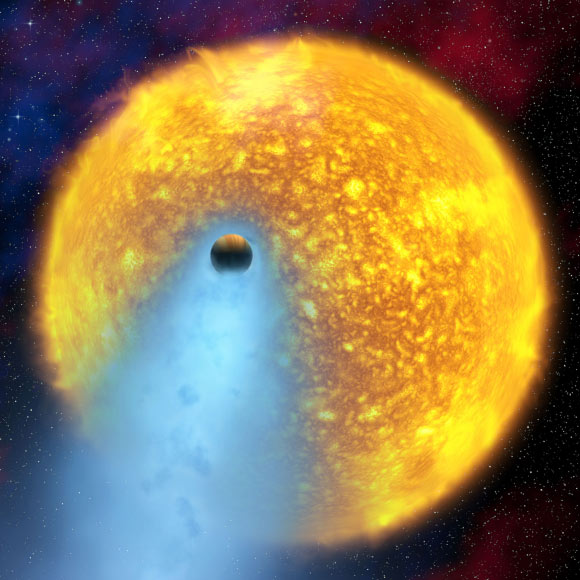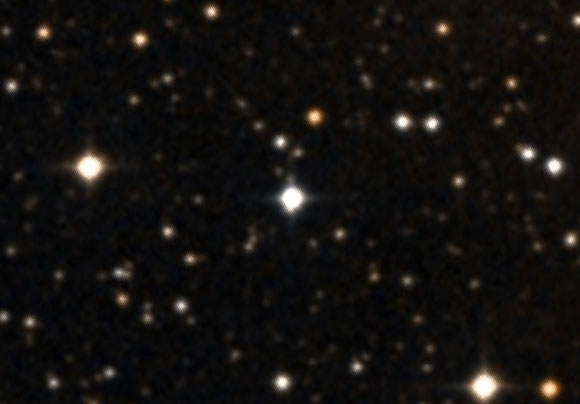A star about 1,480 light-years from Earth called KIC 8462852 has been a fascinating mystery since its discovery was made public in September 2015. Astronomers showed that the star underwent a series of strange dimming events from 2009 to 2013 while it was being monitored by NASA’s Kepler Space Telescope. A new study led by Carnegie Institution astronomer Joshua Simon takes a longer look at KIC 8462852, going back to 2006, and shows that the star brightened significantly in 2007 and 2014.

Artist’s illustration showing a massive exoplanet falling into its host star — one of the possible explanations for the strange dimming of KIC 8462852. Image credit: NASA / ESA / Alfred Vidal-Madjar, Institut d’Astrophysique de Paris, CNRS.
KIC 8462852, also known as Boyajian’s star, Tabby’s star, TYC 3162-665-1 or 2MASS J20061546+4427248, is a main-sequence F-type star located in the constellation Cygnus.
Speculation to account for the star’s dips in brightness has ranged from it having swallowed a nearby exoplanet to a swarm of exocomets or planetesimal fragments orbiting the star to a so-called Dyson sphere (a hypothetical energy-gathering structure built around the star).
In general, stars can appear to dim because a solid object like a planet or a cloud of dust and gas passes between it and the observer, eclipsing and effectively dimming its brightness for a time. But even before this evidence of two periods of increased brightness in the star’s past, the erratic dimming periods seen in KIC 8462852 were unlike anything astronomers had previously observed.
Last year, Dr. Simon and colleagues found that KIC 8462852 dimmed by 0.9% from 2009 to 2012. Its brightness then dropped by an extraordinary 2% over just 200 days.
But the astronomers wanted to look at KIC 8462852 over a longer period of time. So, they went back and examined about 11 years of observing data from the All Sky Automated Survey (ASAS) and about two years of more-recent data from the high-precision All-Sky Automated Survey for Supernovae (ASAS-SN).
They found that the star has continued to dim since 2015 and is now 1.5% fainter than it was in February of that year. What’s more, they showed that in addition to the dimming the star has experienced from 2009 to 2013 and 2015 to now, it underwent two periods of brightening.
“Up until this work, we had thought that the star’s changes in brightness were only occurring in one direction – dimming,” Dr. Simon said.
“The realization that the star sometimes gets brighter in addition to periods of dimming is incompatible with most hypotheses to explain its weird behavior.”
“An important next step will be to determine how the color of the star changes with time, especially during its brief dips in brightness,” added Carnegie Institution astronomer Benjamin Shappee, co-author of the study.
“That information would help narrow down the possible explanations for why this star is doing such strange things.”
“For example, if the dimming was caused by dust obscuring the star from us, then it would appear to get redder as it dimmed. But if large objects were blocking the star’s light, then no color change would be seen.”
“We haven’t solved the mystery yet,” Dr. Simon said.
“But understanding the star’s long-term changes is a key piece of the puzzle.”
_____
Joshua D. Simon et al. 2017. Where Is the Flux Going? The Long-Term Photometric Variability of Boyajian’s Star. arXiv: 1708.07822








